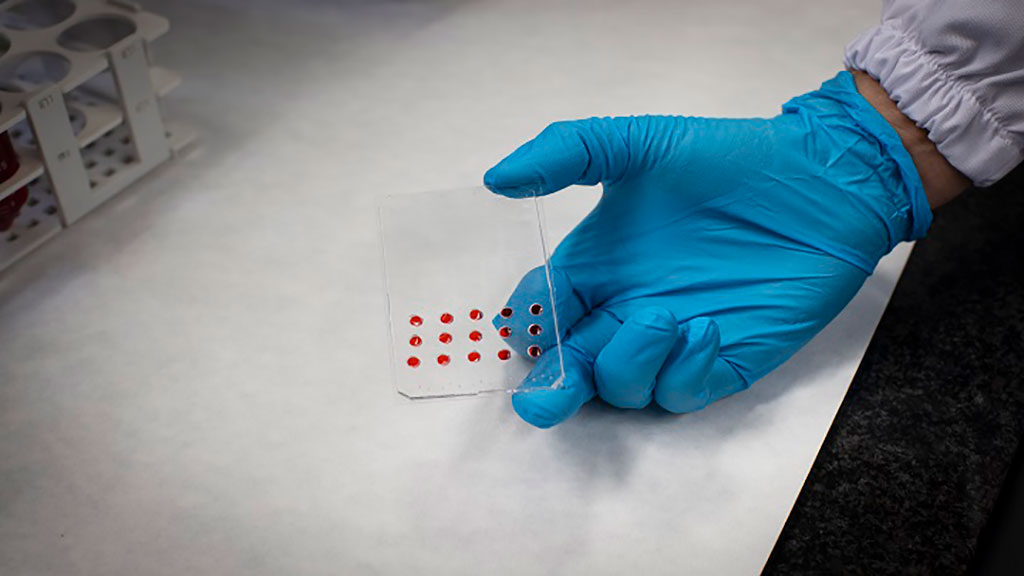Fast, Fully Automated Microfluidic Device Predicts Effectiveness of Cancer Treatment
Posted on 03 Apr 2023
Designing new technologies for personalized cancer treatment is a significant challenge in the ongoing battle against cancer. Tumors possess unique characteristics and predictive indicators of a patient's response to treatment, based on the tumor's molecular characteristics, such as DNA mutations, is a crucial step forward in oncology. Precision medicine seeks to provide a tailored treatment for cancer patients, both adult and pediatric, that is specific to their pathology. Determining whether a patient can benefit from a particular treatment before initiating therapy could provide a boost to personalized cancer treatment. Now, a microfluidic device can quickly and automatically predict the effectiveness of cancer treatment by using a tiny amount of cells from biopsies and without the need for specialized technical staff.
The microfluidic device called microfluidic dynamic BH3 profiling (μDBP) has been developed by researchers at the University of Barcelona (Barcelona, Spain) and the Institute for Bioengineering of Catalonia (IBEC, Barcelona, Spain). The dynamic BH3 profiling (DBP) was among the first functional assays to be successfully tested for predicting treatment in various types of cancer. This system exposes cancer cells to different therapeutic options to quickly identify the most effective treatment for a patient. This approach is conceptually similar to the use of antibiograms to identify appropriate antibiotics for bacterial infections. However, the μDBP microfluidic device represents a significant improvement over previous DBP systems. This new device requires fewer cancer cells to test potential therapies, automates the process, and can be used without requiring specialized technical staff, making it easier to apply in a clinical setting.

The initial step in testing a biopsy sample involves dissociating it into individual cells using mechanical and enzymatic methods. The processed sample is then filtered to obtain individual cells, which are subjected to the desired treatments before being seeded into the microfluidic device. The use of the μDBP microfluidic platform, which contains small wells for cell seeding, reduces the number of cells required to test a treatment, making it possible to test a larger number of drugs, which is a significant breakthrough. The paper published in the journal npj Precision Oncology is the first to use microfluidics for performing the functional assay of the DBP. Unlike other versions of the assay that require expensive machinery and specialized staff, such as the high-throughput DBP with automated plates and dispensers that test hundreds of treatments, the new μDBP device is designed to test treatments in situ quickly, easily, and automatically, without the need for expensive machinery or specialized staff. The team is currently working on a new prototype of the μDBP device that incorporates technical improvements and aims to gather more experimental evidence with primary samples to demonstrate its clinical usefulness in improving the treatment of various cancers, both pediatric and adult.
“The biggest advantage of the μDBP device is also the automation of the whole process, which would help to implement this functional methodology on a clinical scale. All these advantages would ease the adoption of DBP in hospitals as a routine trial,” according to the researchers.
“DBP has been used to identify the efficacy of treatments on a preclinical and clinical scale in many different cancers, both solid and liquid. These studies have used cell lines, animal models and primary samples with high predictive ability in all cases. However, this assay has not yet been widely applied in hospitals,” said lecturer Joan Montero. “So far, several studies have found a good correlation between DBP results and clinical response in primary leukemia samples. There are currently several clinical trials underway, and we would like this technology to be implemented in hospitals in the coming years to improve cancer therapies.”
Related Links:
University of Barcelona
IBEC














